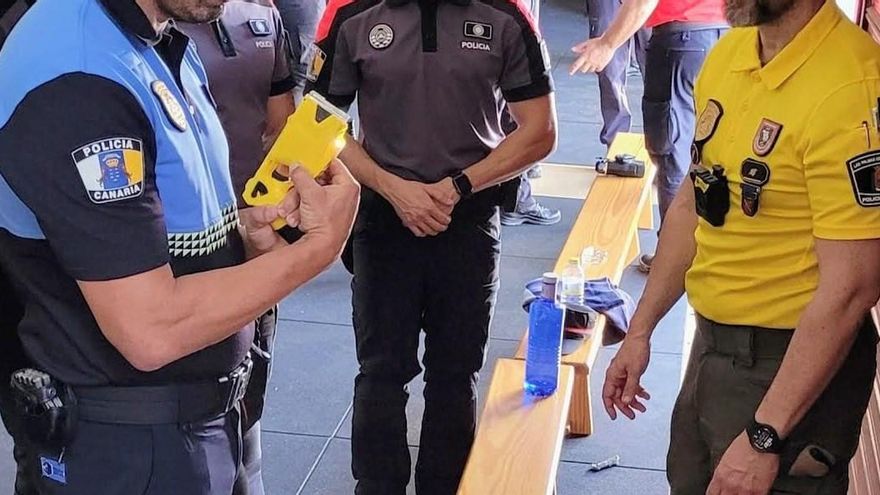
The recent incidents in San Mateo and Gando (Gran Canaria) have reignited discussions about the necessity for more widespread use of electronic control devices, or as they’re more commonly known, electric guns. In these events, National Civil Guards and Police were compelled to utilise their regulatory weapons to subdue a violent individual.
These Control Electronic Devices (CEDs)—which many believe are a valid option for dealing with aggressive or agitated individuals—are considered a less dangerous alternative to semi-automatic firearms.
Now, the circumstances of the San Mateo event differed somewhat from the recent incident at Gando airport. In San Mateo, the attacker was largely static, making it, perhaps, more feasible to use the CED.
### The Posture of the Unions
Conversely, at Gando, the rapid and erratic movements of the young Sub-Saharan individual posed a challenge for the officers involved. One officer was even knocked down. Marcos Santiago, the General Secretary of the Unified Police Union in the Canary Islands, has indicated that, under those conditions, the effectiveness of the Taser would have been very limited.
José Delgado from the Federal Police Union (UFP) stated that the response at Gando was “well executed with the resources we have.” However, he believes that had a CED been available, the young man’s death might have been avoided. His union has indeed called for an “intermediate element” to be placed between the baton and the firearm.
David Taboada, who is trained in weapons and shooting by the Ministry of the Interior, has a different perspective on the events at Gran Canaria airport. He argues that “the CED would not have been effective” during the incident that resulted in a young man’s death. He points out that, given the distance and the speed of the situation, it would have been impractical to deploy such a device. The probes require a minimum distance of 30 centimetres between them to be effective.
Though he doesn’t typically comment on the actions of his colleagues, he asserts that the officers’ actions were fully justified, taking into account the sudden threat posed by an armed individual and the three key criteria for firearm use: “congruence, proportionality, and opportunity.”
### How it Works
The CED administers an electric shock that immobilises a person for five seconds, which must then be used to restrain and handcuff them. Four darts connected to the device are expelled, targeting the muscles and affecting the central nervous system.
According to sources from the General Corps of the Canarian Police (CGPC), the amperage that reaches the body is minimal, just 2.1 milliamps.
### Training
To wield a CED, officers must complete a basic operator course and undertake updates every three years. It’s crucial that the darts are aimed at non-vital areas such as the torso, back or legs. However, hitting the lower limbs can be tricky if the target is moving. Importantly, shots to the head or genitals are strictly prohibited.
The range of the probes extends between seven and 15 metres. Officers can use the CED if the individual is armed with a knife, large stick or iron pipe, is experiencing mental health issues, is involved in domestic violence, or displays heightened aggression due to substances like alcohol or drugs. Its use is not advised in scenarios with strong gas odours or near gas stations.
The CGPC currently has 20 CEDs, split evenly between Santa Cruz de Tenerife and Las Palmas. This equipment allows for two cartridges, meaning the officer has two opportunities to subdue the individual. For effective immobilisation, both a positive probe and a negative probe from the same cartridge need to connect with the target’s skin.
Could the electric shock potentially cause cardiac arrest? According to CGPC sources, during a course presented by a coroner at the University of Barcelona in 2011, it was noted that a pacemaker was struck by a Taser, and it simply reset and continued functioning normally.
When an officer activates a CED, cameras affixed to surrounding officers immediately begin recording the action. This measure ensures accountability and reduces subjective interpretations. Training also suggests that, in certain instances, officers equipped with firearms should stand ready in case the initial attempt with the electric gun fails. Furthermore, one tactical approach is to have an officer distract the individual while another deploys the CED from behind—this way, there’s a greater centre of mass and a reduced risk of injury to the attacker.
















